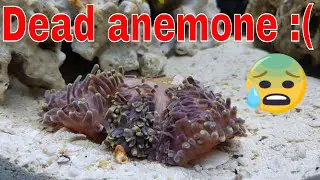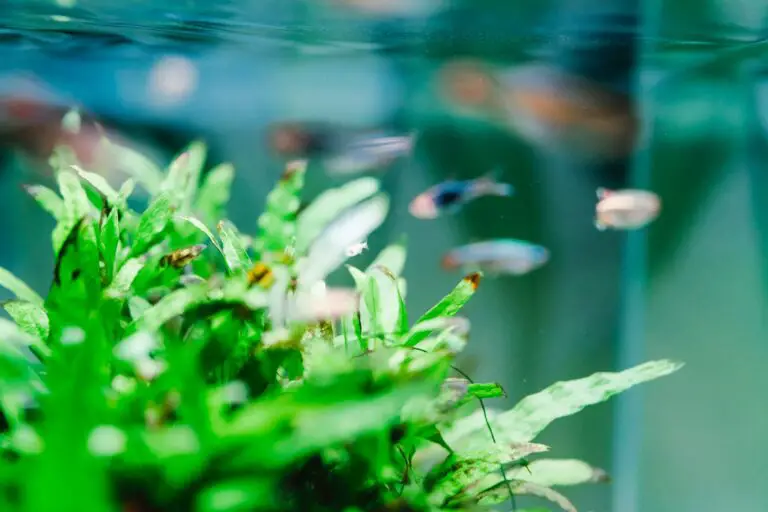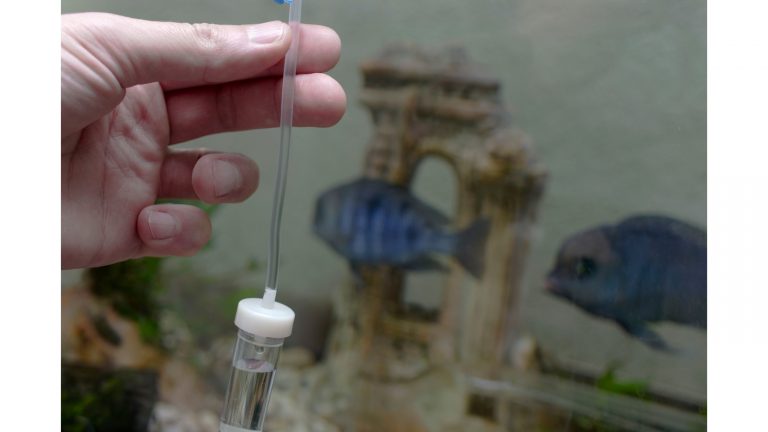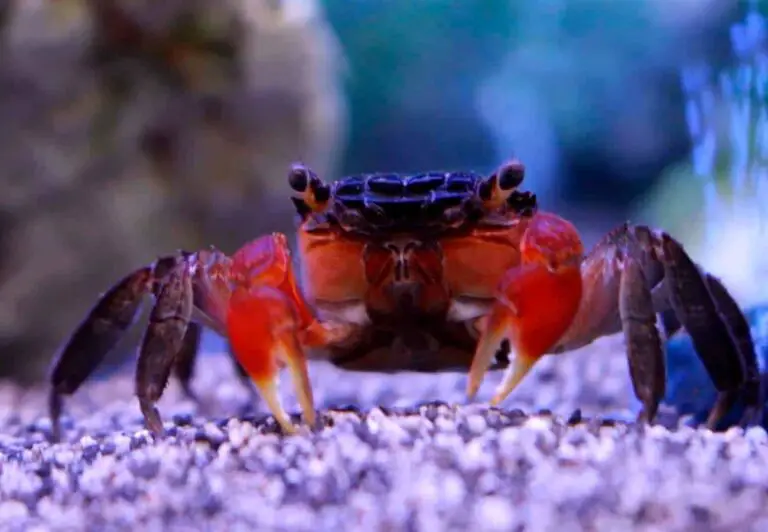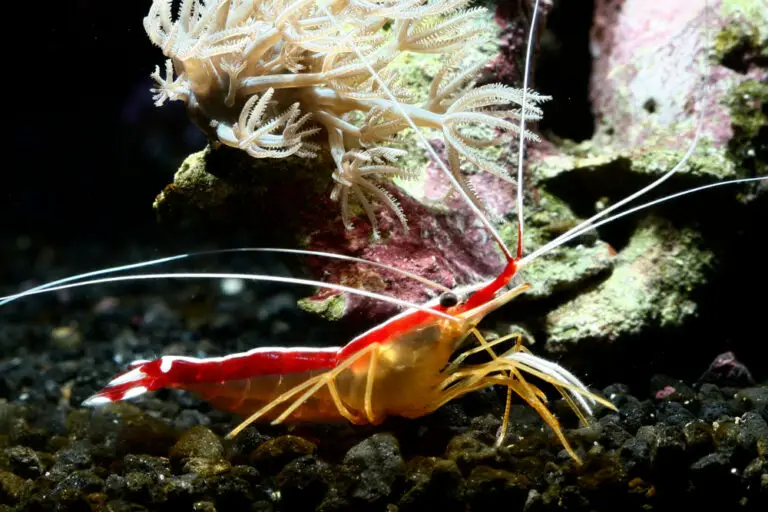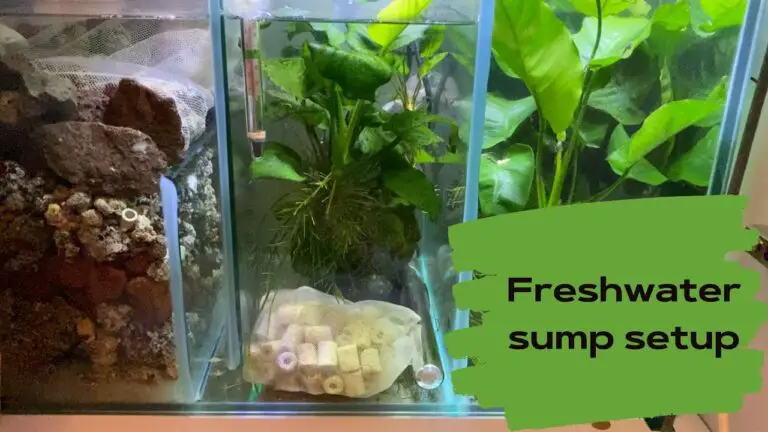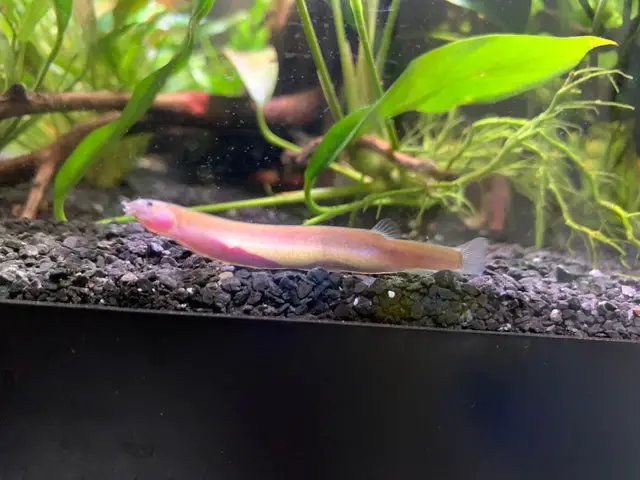Reviving a Dying Bubble Tip Anemone: Essential Care Tips
I’ve had a few Bubble Tip Anemones in my reef aquariums over the years and they’ve always been one of my favorite creatures.
I love watching them feed and their beautiful colors. But, like all living things, they eventually die.
Here are a few signs that your BTA may be dying: The first sign is usually when the anemone starts to lose color.
The tips of the tentacles will start to turn white or brown and the overall color of the anemone will fade.
This is often followed by the anemone shrinking in size as it loses its elasticity.
Another sign that your anemone is dying is if it starts to detach from its substrate or rockwork.
BTAs need a firm surface to attach themselves too so if yours starts to come loose, it’s not a good sign.
If you see any of these signs, it’s important to act quickly.
Try moving the anemone to a different location in your tank or adding some additional lighting if it’s not getting enough light.
You can also try feeding it small pieces of shrimp or fish flesh to see if that stimulates growth.
If none of these things work, unfortunately, there’s not much you can do and you’ll have to say goodbye to your beloved BTA.
If you’ve ever kept a saltwater aquarium, chances are you’ve had a Bubble Tip Anemone (BTA) at some point.
They’re one of the most popular anemones for home tanks because of their vibrant colors and interesting appearance.
But even if you take good care of your BTA, it’s still possible for it to die.
Here’s what you need to know about the dying process of a Bubble Tip Anemone.
When a BTA is dying, the first thing you’ll notice is that its color will start to fade.
The tips of the tentacles will also start to lose their bubbles and become more translucent.
The anemone will start to shrink in size and may eventually detach from its substrate entirely.
If your anemone is exhibiting any of these symptoms, it’s important to take action quickly.
The cause of death in a BTA can be difficult to determine, but there are a few possibilities.
One possibility is that the anemone was not getting enough food. Another possibility is that the water parameters in your tank were not ideal for the anemone.
It’s also possible that the anemone was injured or stressed by something in the tank (like improper lighting or too much flow).
If your BTA is dying, there’s unfortunately not much you can do to save it at this point.
The best thing you can do is remove the anemone from your tank and dispose of it properly (in case of disease).
It’s always sad to see a beloved pet die, but knowing what to expect can help make the situation less stressful.
What Does a Bubble Tip Anemone Look Like When Dying?
A bubble tip anemone (BTA) typically has a bulbous base with long, thin tentacles that taper to a point.
The tips of the tentacles are often white or pale in color, hence the name “bubble tip.”
BTAs are found in a wide range of colors, including green, brown, red, orange, and pink.
Some may even be multi-colored. When a BTA is dying, its appearance can vary depending on the cause of death.
If the anemone is starving or has been exposed to pollutants like heavy metals, it will often deflate and its body will become wrinkled and shrunken.
The tips of the tentacles may also turn black. If the anemone has been attacked by a predator or suffered physical damage, its body may be torn open and its guts spilled out.
In all cases, a dying BTA will usually have few or no bubbles left on its tips.
Why Do My Bubble Tip Anemones Keep Dying?
Your bubble tip anemones may be dying due to a number of reasons including improper lighting, water quality, or lack of food.
Bubble tip anemones are a type of coral that requires specific environmental conditions in order to thrive.
In the wild, they are found in shallow, tropical reefs where they receive plenty of sunlight.
They also require warm water temperatures and clean water with little to no pollution.
In captivity, bubble tips need strong lighting in order to photosynthesize and produce the energy they need to survive.
If your anemone is not receiving enough light, it will slowly start to die.
Bubble tips also require regular feedings of small pieces of meaty seafood such as shrimp or squid.
If they are not getting enough food, they will eventually starve to death.
Finally, it is important to maintain good water quality in your aquarium.
This means regular water changes and using a high-quality filtration system.
Ammonia and nitrites should be at zero levels and phosphate levels should be low as well.
If any of these parameters are out of balance, it can lead to stress for your anemone which can eventually kill it.
How Do You Save an Anemone from Dying?
If you notice your anemone starting to show signs of distress, there are a few things you can do to try and save it.
First, check your water quality and make sure that all parameters are within the ideal range.
Anemones are very sensitive to changes in water quality, so even small fluctuations can cause problems.
If everything looks good there, the next step is to look at your lighting.
Anemones need bright light in order to photosynthesize, so if they’re not getting enough light they will start to die off.
Make sure your anemone is placed in an area where it will get plenty of light.
If it’s still not looking any better, the next step is to feed it. Anemones need a lot of food, so if they’re not being fed enough they will slowly starve to death.
Try offering them small pieces of shrimp or fish twice a week and see if that makes a difference.
Finally, if none of these things seem to be helping, it’s possible that your anemone is just too stressed out and needs a break from everything.
Try moving it to a different tank or placing it in a quiet spot in your aquarium where it can relax for awhile.
With some patience and care, you should be able to save your anemone from dying!
How Do You Treat a Sick Bubble Tip Anemone?
If you notice your bubble tip anemone (BTA) looking sick, there are a few things you can do to try and nurse it back to health.
First, check your water parameters and make sure they are all within the normal range.
If everything looks good there, the next step is to take a close look at your BTA.
Look for any signs of parasites or tissue damage. If you see anything out of the ordinary, you can try treating with a broad spectrum antiparasitic medication like copper sulfate or formalin.
If your BTA is not showing any obvious signs of illness, the next step is to feed it.
BTAs are mostly photosynthetic, but they do still benefit from regular meals. You can offer small pieces of meaty foods like shrimp or squid 2-3 times per week.
Be sure not to overfeed, as this can lead to pollution and further stress your BTA’s immune system.
Finally, provide plenty of hiding places and shady areas in your tank for your BTA to retreat to if it feels stressed or needs some time to heal up.
Bubble tip anemones are very sensitive creatures, so even small changes in their environment can cause them undue stress.
By giving them a little extra TLC when they’re feeling down, you can help them get back on the road to recovery in no time!
How to Save a Dying Bubble Tip Anemone?
If your bubble tip anemone isn’t looking so great, there are a few things you can do to try and revive it.
First, check the water quality in your tank. If everything looks good there, then take a look at the anemone’s environment.
Make sure there aren’t any other fish or invertebrates bothering it, and that it isn’t placed too close to powerheads or other sources of strong water flow.
If the anemone is still not doing well, you can try feeding it small pieces of food (shrimp or squid work well) 2-3 times per week. Be sure not to overfeed, as this can actually kill the anemone.
Finally, if all else fails, you may need to remove the anemone from your tank and place it in a separate holding tank with similar water conditions.
This will give the anemone a chance to recover without having to compete for food and space in your main aquarium.
Unhealthy Bubble Tip Anemone
Unhealthy Bubble Tip Anemone Bubble tip anemones are a type of sea anemone that is commonly kept in saltwater aquariums.
These beautiful creatures can range in color from light green to deep purple, and their “bubble-tipped” tentacles give them a distinctive look.
While bubble tip anemones are relatively easy to care for, they can sometimes become unhealthy.
Here are some signs that your bubble tip anemone may be unwell:
The tips of the tentacles are brown or black: This is a sign of tissue necrosis and is usually caused by water quality issues such as high ammonia levels.
If you see this happening, it’s important to take action immediately to improve the water quality in your tank.
The anemone’s body is shrinking: A healthy bubble tip anemone will have a large, plump body. If you notice that the body is shrinking, it’s a sign that the anemone is not getting enough food.
Make sure you are feeding your fish regularly and providing them with a varied diet.
The anemone has lost its color: A loss of color can be a sign of stress or poor water conditions.
If you notice your bubble tip anemone turning pale, check the water parameters in your tank and make sure everything is within normal limits.
You may also want to try adding some fresh seaweed to the tank for the anemone to feed on.
How to Tell If Bubble Tip Anemone is Dying?
If you have a bubble tip anemone in your saltwater aquarium, you may be wondering how to tell if it is dying.
Here are some signs to look for:
The anemone’s tentacles are retracted and it is not moving around as much as usual.
The anemone’s color is faded or there are patches of white on its body. The anemone has shrunk in size and its mouth is gaping open.
If you see any of these signs, it’s likely that your anemone is dying.
If you’re not sure, you can always ask a qualified aquarium professional for help.
How to Save Dying Anemone?
Anemones are a type of flower that come in many colors, shapes, and sizes. They are often found in bouquets or as centerpieces at weddings and other events.
Anemones can also be found in the wild, growing on rocks or in the sand.
These flowers have a special meaning for many people, which is why it’s so upsetting when they start to die.
If you have an anemone that is wilting or its color is fading, there are some things you can do to try to save it.
First, check the water level in the vase.
Anemones need to be kept moist, so if the water is low, add more.
Make sure the water is clean too an old vase of water can cause problems for anemones (and other flowers).
If the stem of the anemone is very long, you can cut it back a bit to help the flower absorb more water.
You can also try giving your anemone plant food designed specifically for flowers. This will give it nutrients that it might be lacking.
Follow the directions on the packaging for how much and how often to feed your plant.
Another option is to remove the anemone from its current pot and replant it in fresh soil with some fertilizer mixed in.
This might give it the boost it needs to recover. If you’re still having trouble reviving your anemone, take it to a florist or nursery and ask for help.
Bubble Tip Anemone Deflated
Bubble Tip Anemone Deflated It’s not unusual for a Bubble Tip Anemone to deflate its tentacles overnight, especially if the water temperature has dropped or the lighting has become too intense.
If your anemone’s tentacles are looking a bit droopy, don’t worry – this is perfectly normal behavior.
Just make sure to provide your anemone with plenty of gentle light and stable water conditions, and it will soon bounce back!
When to Remove a Dying Anemone?
Anemones are a type of marine invertebrate that can be found in reefs around the world. They are often brightly colored and have a wide range of shapes and sizes.
Anemones are carnivorous animals that use their tentacles to capture prey.
They typically live attached to rocks or coral, but some species are free-floating. Anemones can reproduce both sexually and asexually.
When an anemone reproduces sexually, eggs and sperm are released into the water where fertilization occurs.
The larvae that result from this process settle on the seafloor and develop into new anemones.
Asexual reproduction occurs when an anemone splits itself in half, resulting in two identical individuals.
In captivity, anemones can be kept in aquariums with saltwater fish. However, it is important to note that not all species of anemone are compatible with fish.
Some anemones release toxins that can kill fish or other invertebrates living nearby.
Conclusion
The Bubble Tip Anemone is a beautiful and popular saltwater aquarium invertebrate.
But like all anemones, they have a lifespan and will eventually die. When a Bubble Tip Anemone dies, there are several things that can happen.
The anemone may deflate and sink to the bottom of the tank where it will decompose.
Alternatively, the anemone may detach from its rock or coral host and float to the surface where it will be eaten by fish or other predators.
Or, the anemone’s body may simply disintegrate into a slimy mass.
In any case, it is important to remove a dead anemone from your aquarium as soon as possible to prevent pollution and disease.
